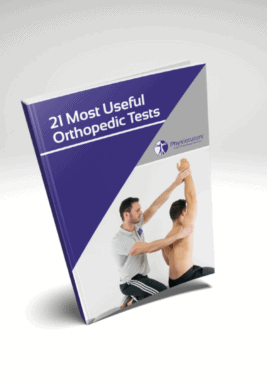Learn
Ankle/Foot Active Range of Motion | Basic AROM Assessment
In active range of motion of the ankle-foot complex we are looking at the following movements: dorsiflexion and plantarflexion at the talocrural joint, inversion and eversion at the subtalar or talocalcaneal joint, as well as toe extension toe flexion toe adduction and toe abduction. In Europe, when we are talking about eversion and inversion we are talking about combined movements. Eversion is the combined movement of dorsiflexion, abduction, and pronation and inversion is the combined movement of plantar flexion, supination, and adduction.
For active range of motion assessments in the directions of dorsi- and plantar flexion have your patient lie in supine position with fully extended legs and the feet hanging off of the edge of the table. Then for dorsiflexion instruct your patient to bring the feet as far as possible towards themselves and for plantar flexion ask your patients to bring the feet as far as possible away from him. For inversion ask your patient to bring the soles together and for eversion instruct your patient to bring the soles away from each other.For toe, flexion ask your patient to curl up the toes and for toe, extension ask your patient to bring the toes as far as possible towards them. For toe abduction instruct your patient to spread the toes and for toe adduction instructor the patient to bring the toes together. Both of these movements might be difficult for some patients.
21 OF THE MOST USEFUL ORTHOPAEDIC TESTS IN CLINICAL PRACTICE

Other wikis you might be interested in:
References
–
Like what you’re learning?
BUY THE FULL PHYSIOTUTORS ASSESSMENT BOOK
- 600+ Pages e-Book
- Interactive Content (Direct Video Demonstration, PubMed articles)
- Statistical Values for all Special Tests from the latest research
- Available in 🇬🇧 🇩🇪 🇫🇷 🇪🇸 🇮🇹 🇵🇹 🇹🇷
- And much more!








